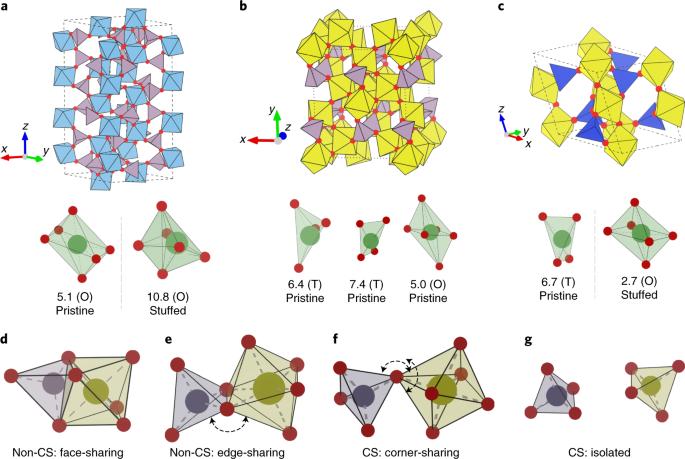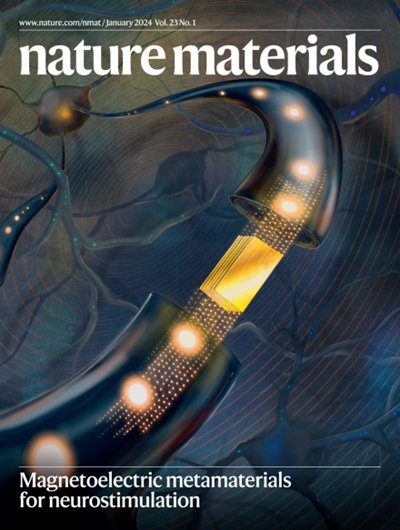具有共角框架的锂超离子导体
IF 37.2
1区 材料科学
Q1 CHEMISTRY, PHYSICAL
引用次数: 39
摘要
超离子锂传导性只在少数几类材料中被发现,大部分出现在硫代磷酸盐中,很少出现在氧化物中。在本文中,我们揭示了氧化物晶体结构框架的分角连通性促进了超离子导电性,我们从扭曲的锂环境以及锂与非锂阳离子之间的相互作用减少中合理地解释了这一点。通过对具有这一特征的材料进行高通量搜索,我们发现了十种新的氧化物框架,预测它们具有超离子电导率--我们在实验中证明 LiGa(SeO3)2 的体离子电导率为 0.11 mS cm-1,活化能为 0.17 eV。我们的研究结果让我们深入了解了氧化物材料中锂离子快速迁移的因素,并将加速全固态电池新型氧化物电解质的开发。超离子锂传导性只在少数几类材料中观察到,其中大部分是硫代磷酸盐,很少在氧化物中观察到。现在的研究表明,氧化物晶体结构框架中的分角连通性可促进超离子导电性。本文章由计算机程序翻译,如有差异,请以英文原文为准。

Lithium superionic conductors with corner-sharing frameworks
Superionic lithium conductivity has only been discovered in a few classes of materials, mostly found in thiophosphates and rarely in oxides. Herein, we reveal that corner-sharing connectivity of the oxide crystal structure framework promotes superionic conductivity, which we rationalize from the distorted lithium environment and reduced interaction between lithium and non-lithium cations. By performing a high-throughput search for materials with this feature, we discover ten new oxide frameworks predicted to exhibit superionic conductivity—from which we experimentally demonstrate LiGa(SeO3)2 with a bulk ionic conductivity of 0.11 mS cm−1 and an activation energy of 0.17 eV. Our findings provide insight into the factors that govern fast lithium mobility in oxide materials and will accelerate the development of new oxide electrolytes for all-solid-state batteries. Superionic lithium conductivity has only been observed in a few classes of materials, mostly in thiophosphates but rarely in oxides. Corner-sharing connectivity in an oxide crystal structure framework is now shown to promote superionic conductivity.
求助全文
通过发布文献求助,成功后即可免费获取论文全文。
去求助
来源期刊

Nature Materials
工程技术-材料科学:综合
CiteScore
62.20
自引率
0.70%
发文量
221
审稿时长
3.2 months
期刊介绍:
Nature Materials is a monthly multi-disciplinary journal aimed at bringing together cutting-edge research across the entire spectrum of materials science and engineering. It covers all applied and fundamental aspects of the synthesis/processing, structure/composition, properties, and performance of materials. The journal recognizes that materials research has an increasing impact on classical disciplines such as physics, chemistry, and biology.
Additionally, Nature Materials provides a forum for the development of a common identity among materials scientists and encourages interdisciplinary collaboration. It takes an integrated and balanced approach to all areas of materials research, fostering the exchange of ideas between scientists involved in different disciplines.
Nature Materials is an invaluable resource for scientists in academia and industry who are active in discovering and developing materials and materials-related concepts. It offers engaging and informative papers of exceptional significance and quality, with the aim of influencing the development of society in the future.
 求助内容:
求助内容: 应助结果提醒方式:
应助结果提醒方式:


